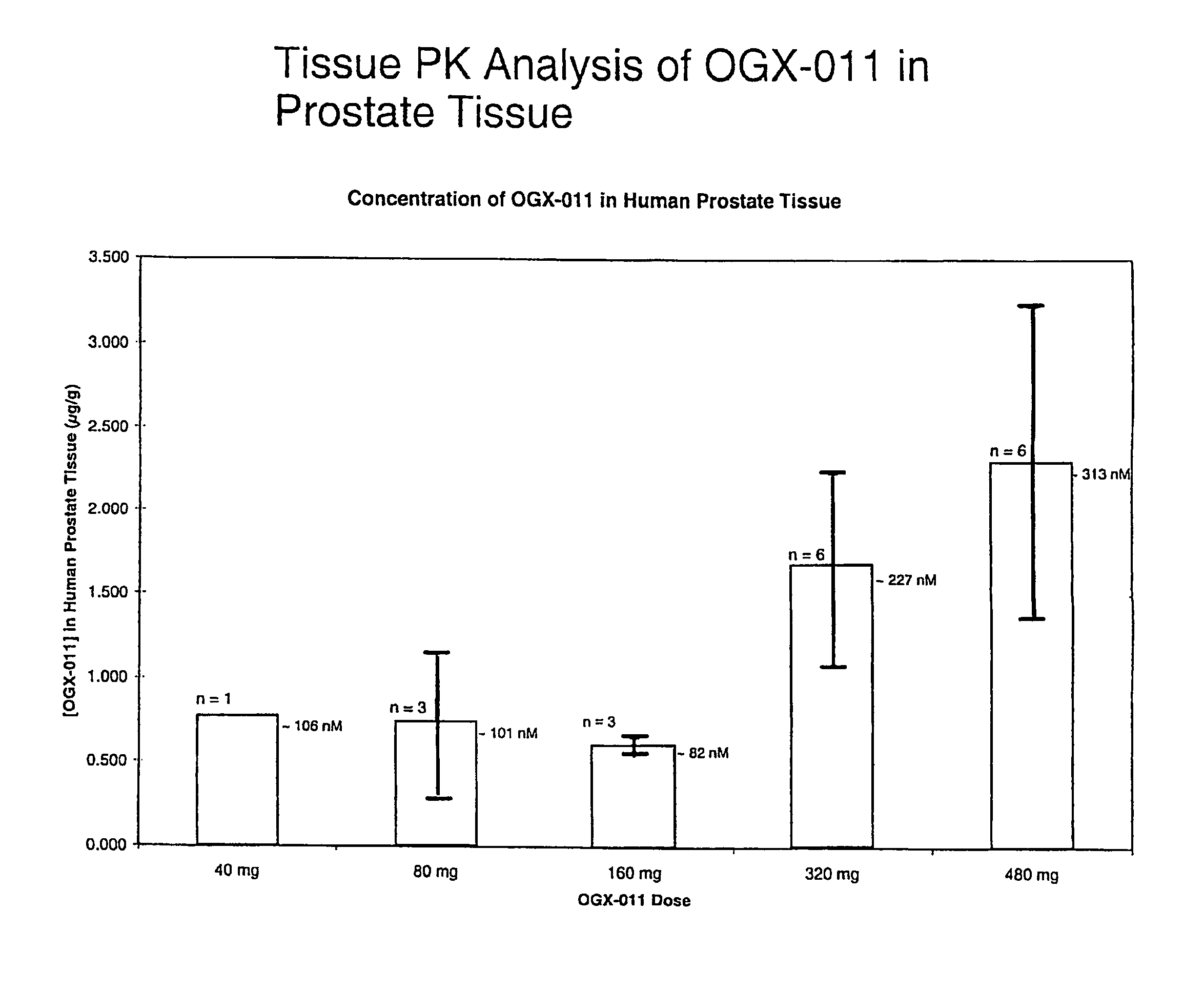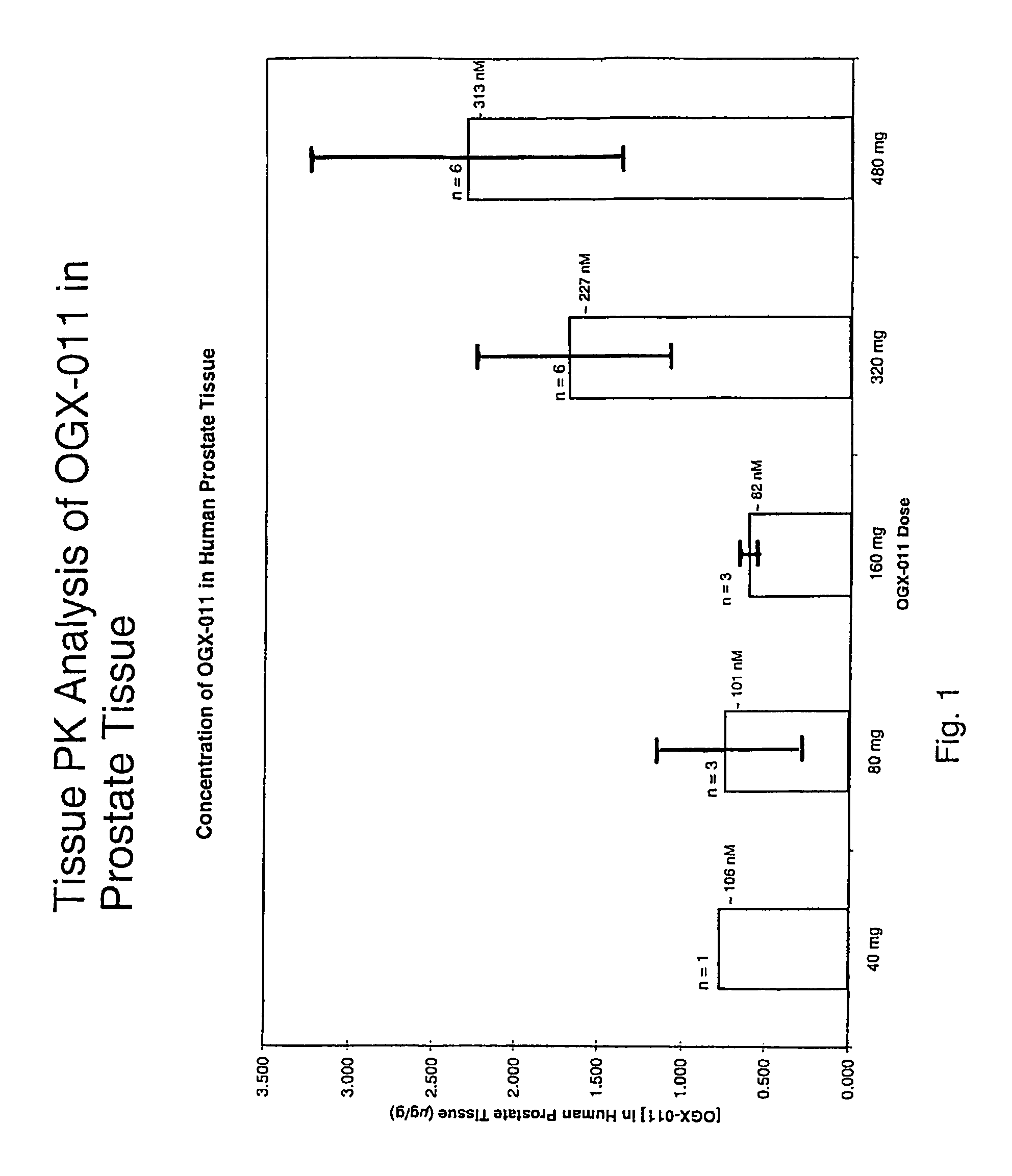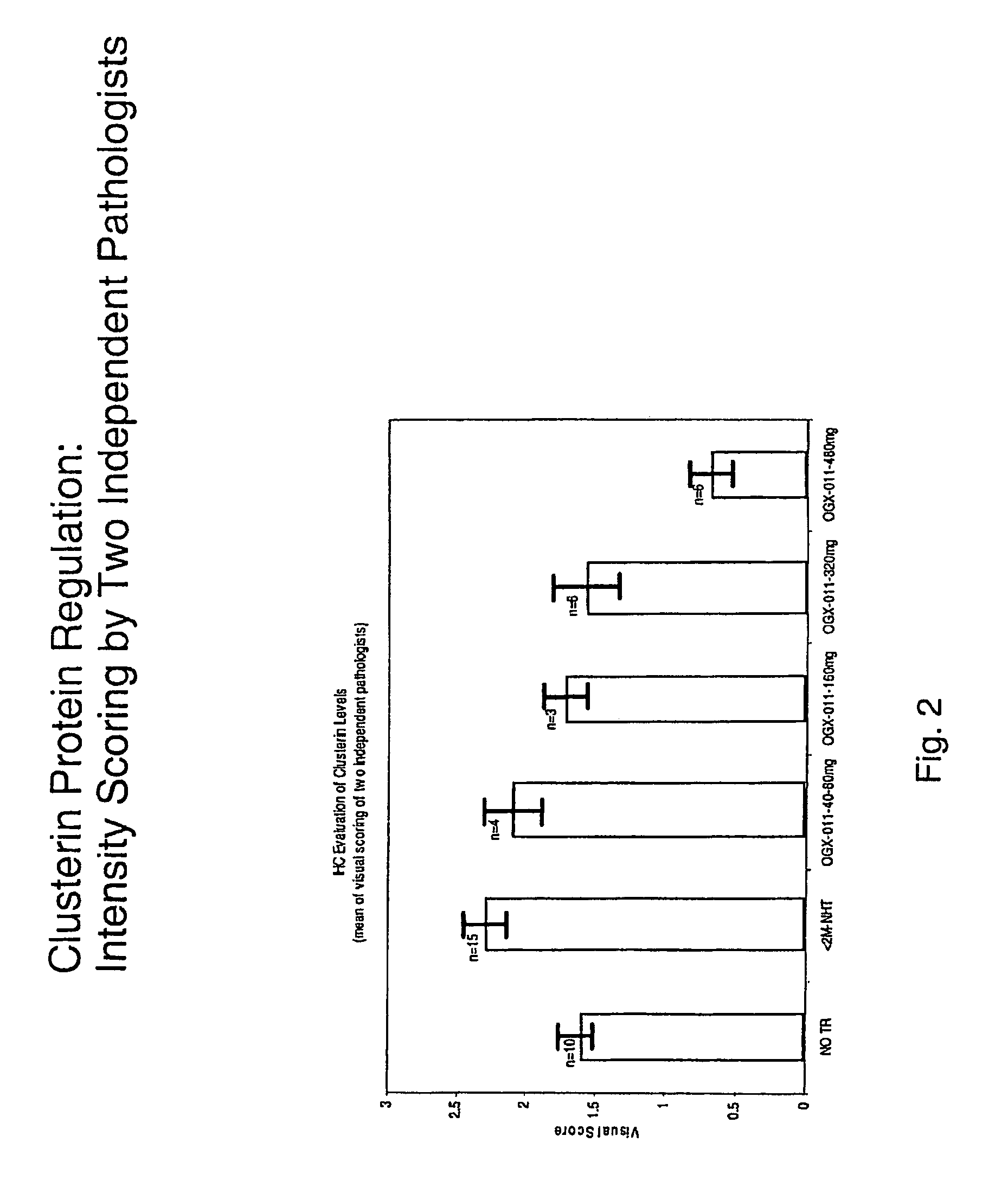Clusterin antisense therapy for treatment of cancer
a clusterin and cancer technology, applied in the field of cancer treatment, can solve the problems of increased chemotherapy and radiation therapy sensitivity, limited treatment success, delay in progression and promotion of apoptosis, etc., and achieve the effect of high reduction of clusterin mrna
- Summary
- Abstract
- Description
- Claims
- Application Information
AI Technical Summary
Benefits of technology
Problems solved by technology
Method used
Image
Examples
example 1
Enhancing Hormone Sensitivity Using Various Clusterin ASOs in Murine Model
[0052]Targeting cell survival genes up-regulated by androgen withdrawal may enhance castration-induced apoptosis and thereby prolong time to overt recurrence. ASOs corresponding to the clusterin translation initiation site were designed and shown to reduce clusterin levels in a dose-dependent and sequence-specific manner (Miyake, H.; Nelson, C.; Rennie, P. S. et al. Cancer Res. (2000) 60(1):170-6; Miyake, H.; Chi, K.; Gleave, M. E. Clinical Cancer Res (2000) 6:1655-63.
[0053]Male mice bearing Shionogi tumours were castrated 2 to 3 weeks after tumour implantation, at which time tumours were 1 to 2 cm in diameter, and randomly selected for treatment with antisense clusterin versus mismatch control oligonucleotides. Beginning 1 day after castration, 12.5 mg / kg of oligonucleotide was administered once daily by intraperitoneal injection for 40 days. Shionogi tumours regressed faster and complete regression occurred ...
example 2
Characterization of Human Clusterin ASO-OGX-011
[0055]ASO sequences directed against different sites on the human clusterin gene were synthesized and tested for their ability to decrease clusterin gene expression in human prostate cancer cell lines that overexpress clusterin (PC3 and LNCaP). The clusterin gene was ‘walked’ using a quantitative TaqMan RT-PCR assay, which compared the potency of over 80 clusterin ASOs. An active and novel 21-mer ASO (5′-CAGCAGCAGAGTCTTCATCAT-3′; SEQ ID NO. 1), complementary to the translation initiation site of human clusterin, was capable of inhibiting clusterin mRNA expression by up to 90%. OGX-011 has this optimal sequence, and is a 2nd-generation ASO using a phosphorothioate backbone and an additional 2′-O-(2-methoxy) ethyl (2′-MOE) modification to the 2′-position of the carbohydrate moiety on the 4 nucleotides at the 5′ and 3′ ends of the molecule (gapmer).
example 3
Enhancing Chemotherapy Sensitivity Using Clusterin ASOs in Prostate Cancer
[0056]Clusterin ASOs also increased the cytotoxic effects of mitoxantrone and paclitaxel, reducing the IC50 of PC3 and Shionogi cells by 75%-90% (Miyake, H.; Rennie, P.; Nelson C. et al. (2000) Cancer Res 60:2547-54; and Miyake, H.; Chi, K.; Gleave, M. E. (2000) Clinical Cancer Res 6:1655-63). Cytotoxicity of 10-nM paclitaxel increased in a dose-dependent manner as the concentration of clusterin ASO increased. The induction of apoptosis by 10-nM paclitaxel, as demonstrated by DNA laddering and PARP cleavage, could only be seen when used with clusterin ASOs.
[0057]Synergy between clusterin ASOs and chemotherapy also occurs in vivo. The recurrence of AI Shionogi tumours is delayed longest with combined clusterin ASOs and paclitaxel compared to either agent alone. Although clusterin ASOs had no effect on the growth of established AI Shionogi or PC3 tumours, clusterin ASOs synergistically enhanced paclitaxel-induce...
PUM
| Property | Measurement | Unit |
|---|---|---|
| diameter | aaaaa | aaaaa |
| molar ratio | aaaaa | aaaaa |
| pH | aaaaa | aaaaa |
Abstract
Description
Claims
Application Information
 Login to View More
Login to View More - R&D
- Intellectual Property
- Life Sciences
- Materials
- Tech Scout
- Unparalleled Data Quality
- Higher Quality Content
- 60% Fewer Hallucinations
Browse by: Latest US Patents, China's latest patents, Technical Efficacy Thesaurus, Application Domain, Technology Topic, Popular Technical Reports.
© 2025 PatSnap. All rights reserved.Legal|Privacy policy|Modern Slavery Act Transparency Statement|Sitemap|About US| Contact US: help@patsnap.com



